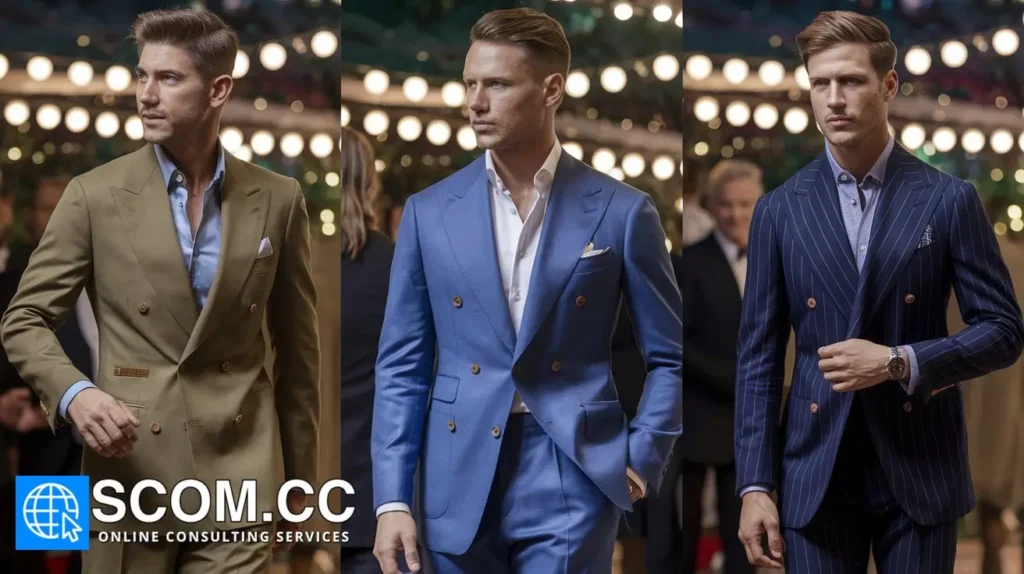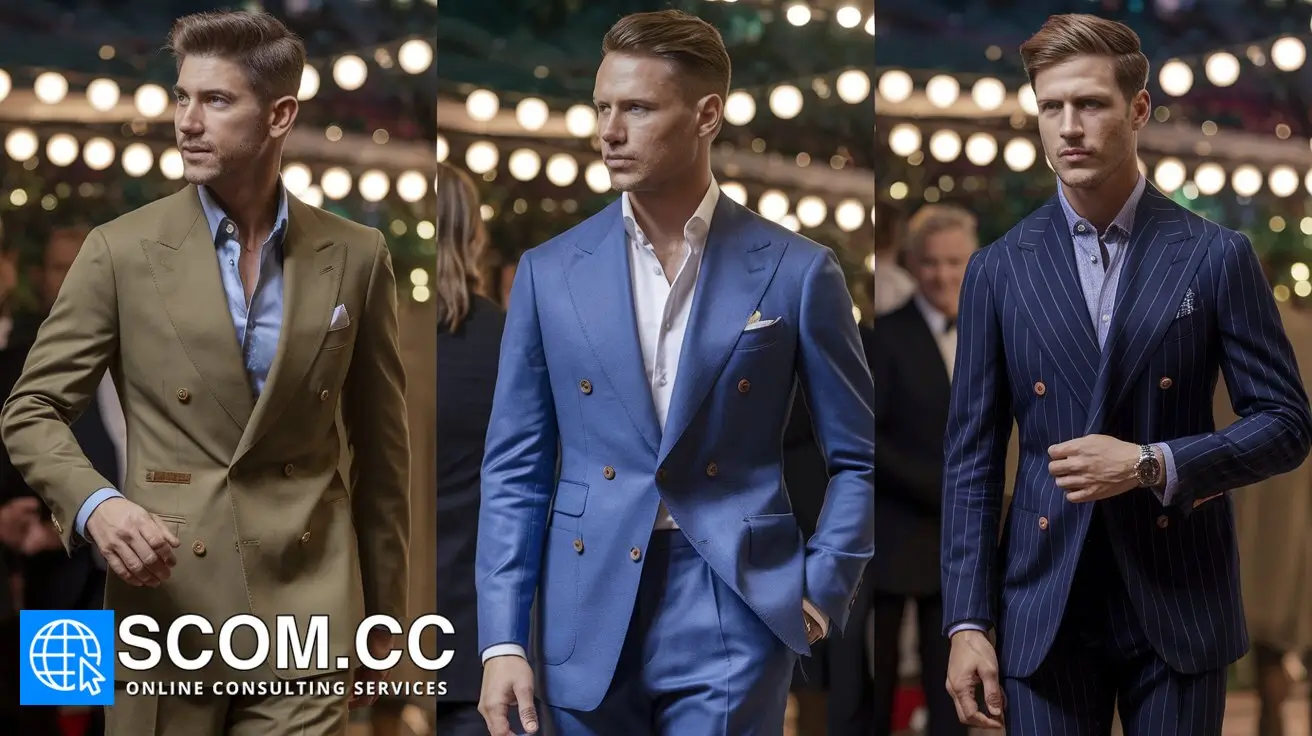The Revival of Vintage Styles in Contemporary Tailoring

The Revival of Vintage Styles in Contemporary Tailoring
Fashion is cyclical, with trends from the past continually making their way back into the mainstream. In 2024, one of the most captivating developments in the world of fashion is the revival of vintage styles in contemporary tailoring. This trend pays homage to iconic fashion eras while infusing them with modern touches that cater to today’s tastes and lifestyles. From 1920s-inspired suits to 1970s bohemian flair, vintage tailoring is making a bold comeback. Here’s how this revival is shaping contemporary fashion.
The Appeal of Timeless Elegance
One of the main reasons for the resurgence of vintage styles in tailoring is their timeless elegance. Certain silhouettes and fabrics have a perennial appeal that transcends trends, making them ideal for modern reinterpretation. The key elements of this revival include:
- Classic Silhouettes: Tailoring has always been about structure, and vintage designs emphasize clean lines and sharp tailoring. Double-breasted suits, high-waisted trousers, and pencil skirts are some examples of silhouettes making a comeback. These styles exude sophistication and offer a polished, put-together look.
- Heritage Fabrics: Fabrics like tweed, velvet, and houndstooth have long been associated with vintage tailoring. Their durability and rich texture make them a favorite for contemporary designers looking to add depth and luxury to their creations. Modern tailors are reintroducing these materials, often with a sustainable twist.
Vintage styles provide a sense of nostalgia, yet they remain relevant today because of their elegance and adaptability.
Blending Old and New
The modern take on vintage tailoring doesn’t simply replicate old styles; it blends them with contemporary elements to create something fresh and exciting. This fusion of past and present includes:
- Updated Fits: While vintage tailoring often favored structured and sometimes restrictive fits, contemporary versions prioritize comfort without sacrificing style. For example, 1950s-inspired dresses might be reimagined with stretch fabrics, or 1960s mod suits could be cut in a way that allows for greater movement.
- Modern Details: Tailors are incorporating modern details like hidden pockets, eco-friendly materials, and innovative fastenings into vintage-inspired garments. These updates make the pieces more functional and suited to modern-day needs.
- Mixing Vintage with Modern Accessories: Pairing vintage-inspired tailored garments with contemporary accessories, such as sleek leather bags or minimalist jewelry, creates a balanced look that feels both retro and current.
This blending of old and new allows fashion enthusiasts to enjoy the charm of vintage styles without feeling dated.
The Influence of Iconic Eras
Different eras bring different inspirations to contemporary tailoring, with designers and tailors drawing from a rich history of fashion. Here’s how some iconic decades are influencing today’s trends:
- 1920s: Known for its art deco influences and luxurious fabrics, the 1920s inspire contemporary tailoring with elements like geometric patterns, satin lapels, and elegant draping. Modern interpretations of 1920s styles often emphasize glamour and sophistication, making them perfect for evening wear.
- 1950s: The post-war era brought tailored hourglass silhouettes and polished, feminine designs. Today’s tailors are reviving 1950s fashion with cinched waists, full skirts, and fitted jackets that celebrate the female form while incorporating modern fabrics and techniques.
- 1970s: The bohemian spirit of the 1970s continues to influence contemporary fashion, particularly in tailoring. Wide-leg trousers, flowing silhouettes, and bold prints are being reimagined with a modern edge. Tailors are also embracing the laid-back yet sophisticated vibe of the era, offering versatile pieces that transition from day to night.
These eras offer a treasure trove of inspiration, allowing tailors to create garments that are rich in history yet perfectly suited for today’s fashion-forward individuals.
Sustainability and Vintage Tailoring
The sustainability movement in fashion has played a significant role in the revival of vintage styles. As consumers become more environmentally conscious, there is a growing appreciation for the longevity and craftsmanship associated with vintage tailoring. Key aspects include:
- Durability: Vintage-inspired tailoring often emphasizes quality materials and construction techniques that stand the test of time. Investing in such pieces means owning garments that can last for years, reducing the need for frequent replacements and contributing to a more sustainable wardrobe.
- Second-Hand and Upcycled Fashion: The rise of second-hand shopping and upcycling has made vintage tailoring more accessible. Many fashion enthusiasts are turning to thrift stores and vintage shops to find classic pieces that can be tailored to fit their modern style. Additionally, upcycled garments—where old clothing is repurposed into new designs—are gaining popularity.
- Slow Fashion: Vintage tailoring aligns with the slow fashion movement, which prioritizes quality over quantity. By choosing tailored pieces that are made to last, consumers are rejecting the disposable culture of fast fashion.
Sustainability and vintage tailoring go hand in hand, offering a stylish and eco-conscious alternative to mass-produced clothing.
The Role of Celebrities and Pop Culture
Celebrities and pop culture continue to play a pivotal role in popularizing vintage tailoring. Influencers, actors, and musicians often turn to vintage styles for red carpet events and public appearances, sparking widespread interest in these timeless looks. Some notable examples include:
- Red Carpet Glamour: Celebrities frequently choose vintage-inspired gowns and suits for high-profile events, showcasing the enduring appeal of tailored elegance. Their choices often lead to a resurgence in similar styles among fashion-conscious consumers.
- Film and Television: Popular shows and movies set in the past, such as "Mad Men" or "The Crown," have reignited interest in vintage fashion, particularly tailored garments. These cultural phenomena have inspired a new generation to embrace classic styles.
- Social Media Influence: Fashion influencers on platforms like Instagram and TikTok are showcasing how to incorporate vintage tailoring into everyday wardrobes, making these styles more accessible and desirable.
The visibility of vintage tailoring in pop culture helps to keep these styles in the spotlight, encouraging more people to explore and adopt them.
Tailoring for the Modern Lifestyle
While vintage tailoring draws heavily from the past, it’s important that these garments suit the demands of the modern lifestyle. Today’s interpretations of vintage styles are not just about aesthetics—they also focus on practicality and versatility. Here’s how:
- Comfort: Modern tailoring ensures that even vintage-inspired garments are comfortable and easy to wear. This might mean adding stretch fabrics, incorporating softer linings, or designing with a more relaxed fit.
- Versatility: Tailors are creating vintage-inspired pieces that work across various settings. A tailored suit with 1960s influences might be styled for both the office and a night out, while a 1970s-inspired dress could transition from day to evening with a change of accessories.
- Customization: Custom tailoring allows for personalization, so clients can choose vintage styles that suit their tastes while ensuring that the garments fit perfectly and meet their lifestyle needs.
This focus on adaptability ensures that vintage-inspired tailoring is not just nostalgic but also highly functional for contemporary living.
Conclusion
The revival of vintage styles in contemporary tailoring is more than a fleeting trend—it’s a celebration of fashion’s rich history, reimagined for the present day. By blending classic silhouettes, heritage fabrics, and iconic designs with modern innovations, tailors are creating garments that offer both style and substance. Whether you’re drawn to the elegance of the 1920s, the femininity of the 1950s, or the bohemian flair of the 1970s, there’s a place for vintage tailoring in your wardrobe. As you explore this timeless trend, you’ll find that vintage styles not only enhance your personal style but also contribute to a more sustainable and thoughtful approach to fashion.

To explore more about tailoring, visit our Blog of Tailoring. If you have any questions or need assistance, go to our contact page. Additionally, you can find more information about tailoring and consulting at this tailoring and consulting portal.

Leave a Reply